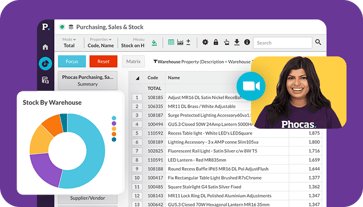Generating value with business intelligence
Business Professor and economist Aaron Levenstein once said, “statistics are like bikinis. What they reveal is suggestive, but what they conceal is vital.” In business, this statement can be applied to data as well.
At a time where huge amounts of data are being produced, it is becoming increasingly harder to make sense and utilize the data at hand as an asset instead of a hindrance. This has seen a trend in progressive organizations across the world investing in Business Intelligence (BI) to gain clear insights into what their data is really saying.
Essentially, BI improves business decision making by using a fact-based system.
In 2019, leading information technology research and advisory company Gartner predicted that by 2021, business units would control at least 40% of the total budget for BI. Fast forward two years and 45% of organizations have deployed pervasive BI and 67% of ‘best in class’ companies have some form of self-service BI.
What value can I really generate with BI?
1. Empowerment (of employees)
The more people who have access to data in an organization, the greater the results. This is because data empowers any worker, at any level to make informed decisions with pertinent, real-time information. In a blog series on the Past, Present and Future of BI, we explained that by using BI software, organizations collectively can make better business decisions, improve processes and increase profitability. “With a BI tool, you can reduce or often eliminate the guesswork.”
2. Clear visibility
Pay Pal co-founder Max Levchin once said, “the world is now awash in data and we can see consumers in a lot clearer ways.” BI also creates clear organizational visibility on all levels with data. Utilizing BI enables workers to understand what is clutter (where they are wasting time on unrelated projects) and gives them the tools to redirect time and resources into key business objectives. With everyone on the same page, it helps employees work together to get the job done quickly and efficiently.
3. Fast Answers
No more waiting days, weeks or even months for sales reports you needed yesterday. BI software, like Phocas, enables users to pull up collaborative data in seconds in a simple and visual format that is accessible by all functions of an organization.
4. Alignment (company activities with corporate strategy)
Companies can incur large costs when their people focus on things that are not aligned with the company’s strategy. SAP found that when a thorough understanding of business and technical requirements for BI are in place, there is an increase of 69% higher revenue per employee. They also found that 50% of higher performing companies use analytical information strategically. When you align BI insight with the overarching corporate strategy, the results speak for themselves.
Driving value through incremental change
While digital transformation often implies disruptive innovation, in reality, most organizations realize the true value of business intelligence through a series of thoughtful, incremental improvements.
This could be as small as identifying a single process that needs improvement, analyzing it using your BI tool, and implement a small change. It's key to measure the impact and repeat the cycle to drive ongoing improvement.
For example, Tradeware improved cash flow over throughout the year by optimizing stock levels in small increments, guided by BI insights.
Tip: Start small to encourage team buy-in. Big, abrupt changes can stall BI initiatives, while incremental improvements help build credibility and momentum as results accumulate over time.
What value you can get from the right BI tool?
Business intelligence software provides many other benefits to a business. To see how the top BI vendors compare, check out the results from a recent global BARC BI survey.

Head of Customer Marketing & Campaigns for Phocas Software.
Related blog posts

Picture a football coach preparing for the big game. He watches game‑tape, studying player metrics, analyzing every play and using real‑time stats to inform strategy. That’s exactly how sales managers and sales leaders should approach their coaching program—with a data‑driven approach.
Read more
Sales professionals operate in face-paced environments with savvy customers who have a lot of choice. Whether you're in B2B sales or working with consumers, the sales process is challenging with longer sales cycles, more decision-makers and higher expectations for follow-up and advice. To stay competitive, sales reps and sales teams need the best sales tools to reduce administrative tasks and improve sales team performance.
Read more
“Free BI tools trial, business analytics software for free, free BI reporting with AI-powered insights”– these offers are tempting business people all the time especially as new open-source players enter the market and want cut-through.
Read more
For many sales professionals, the phrase daily sales report used to conjure up thoughts of frustrating delays and data that's already stale by the time it is received. Often these reports were created by the IT or finance team who had a long list of requests, so the information was more of an historical snapshot. Fortunately, the creation of sophisticated data analytics has improved this work, transforming sales reporting into a self-service and quick task.
Read moreBrowse by category

Find out how our platform gives you the visibility you need to get more done.
Get your demo today
